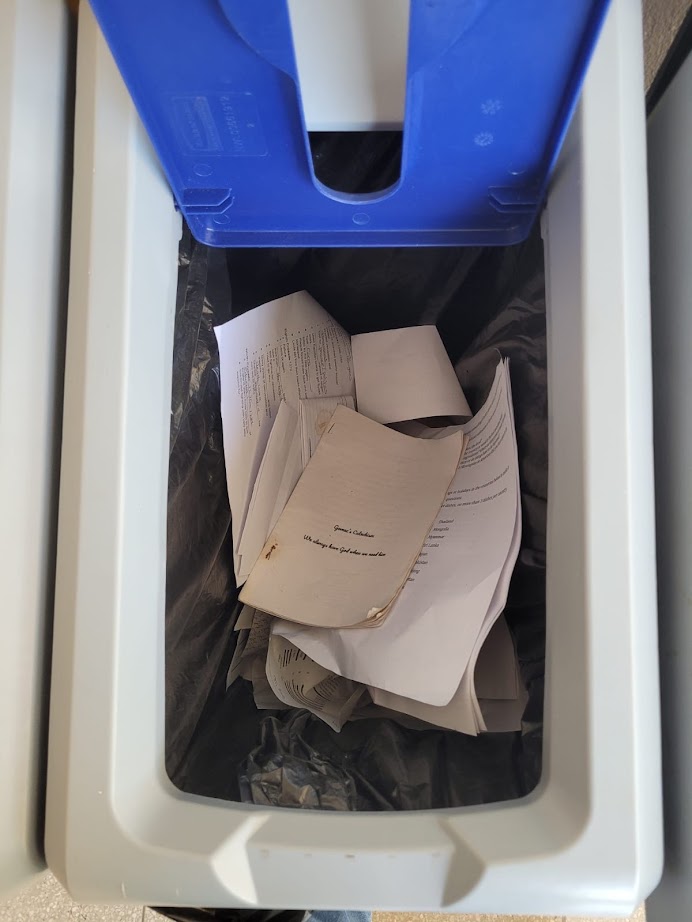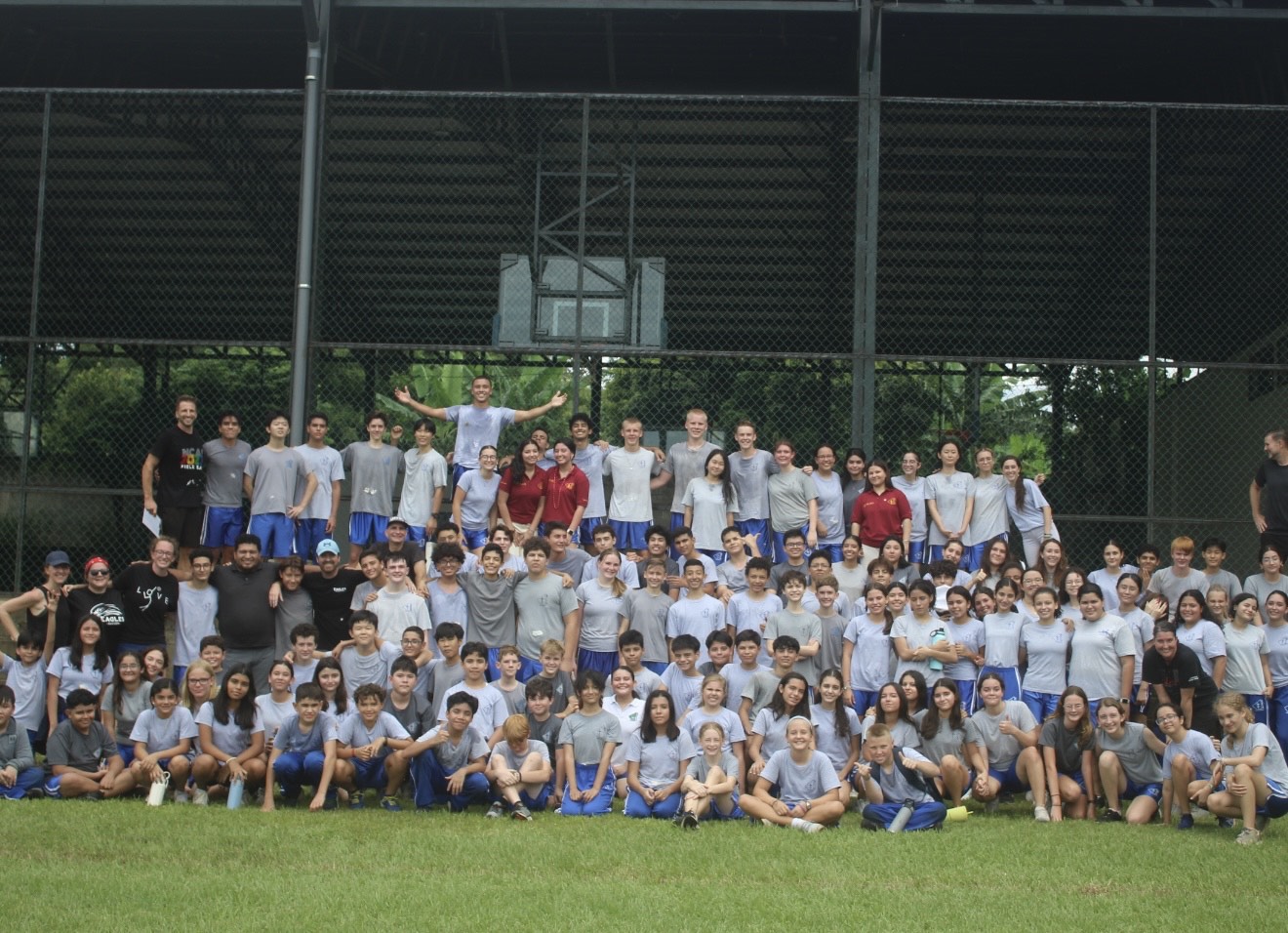At NCAI, we print a lot of paper, probably more than you expect. It takes about 10,000 sheets of paper to make one tree, and in just one average week, our school prints around 8,500 sheets of paper from the copy room alone. That adds up to more than 306,000 sheets of paper a year or around 30 trees’ worth of paper. And this doesn’t include what is printed in the computer labs or teacher workrooms.
For my restoration project, I chose to focus on reducing unnecessary paper use at school. Our reliance on paper has several consequences. Even though paper comes from trees, a renewable resource, excessive usage of paper contributes to deforestation and a larger carbon footprint. The process of producing, transporting and disposing paper uses energy and natural resources, all which harm our environment.
Beyond the negative environmental impact, as Christians we are called to care for God’s creation and use our resources wisely. We are called to be good stewards of the Earth and not to create waste. Using paper carelessly not only harms the environment but also supports a culture of wastefulness, where resources are used without thought or moderation. Financially, the burden is also significant. NCAI spends approximately $646 on paper and $1,200 on toner every month in only the copy room printers. These numbers show the importance of reevaluating our paper usage and exploring more cost-effective options.
To better understand how paper is being used at school, I sent surveys to secondary and elementary teachers, as well as high school students.
Secondary teachers indicated that the absence of textbooks in subjects like math forces them to depend on printed materials. Social Studies and English also heavily rely on printed handouts and articles. They also said they had issues such as duplicate copies resulting from reprints or technical difficulties with printers. About 50 percent of secondary teachers distribute worksheets four to five times per week, with math classes using more paper due to packets printed. Approximately 60 percent shared that they provided more paper-based assignments than digital ones, though some are exploring alternatives such as turning traditional handouts into interactive lessons and using Google Classroom more.
Teachers in Elementary reported that most paper is used for class handouts and that extra worksheets—often printed in anticipation but not used due to time constraints—substantially add to the waste. Many suggested that better planning, such as binding handouts at the beginning of the year, using page protector sleeves to reuse worksheets multiple times, and investing in reusable student workbooks and textbooks, could reduce our paper use. Some suggested sharing more google classroom assignments for upper elementary. From those surveyed 70 percent expressed a willingness to share more resources digitally, even though only about 30 percent do so at present.
Students observed that many worksheets, especially math packets, are printed and then discarded or lost shortly after, often leaving lockers filled with redundant handouts; this creates a messier and less efficient work environment. Most students favor digital solutions such as Google Classroom and more digital work to replace repetitive printed assignments. Survey results across different grades indicated the following patterns: 7th-grade classes use the most paper in Math and Science; in 8th grade, English leads, followed by Math; 9th grade paper is used heavily on Science and English; 10th grade uses a significant amount in Geography and Math; 11th grade mainly in Chemistry; and in 12th grade, Government and Calculus are the top subjects.
The surveys clearly indicate that while paper is an integral part of our educational process, both teachers and students are ready to adopt changes that reduce waste and improve efficiency.
One potential solution to think about for the future is the adoption of one-to-one devices. This suggestion was brought forward by both secondary and elementary teachers. This approach offers benefits beyond reducing paper use. For example, comparing the ongoing costs of printing with the investment in Chromebooks might reveal that digital options are more cost-effective over time. Additionally, incorporating and teaching digital tools is critical for students to be responsible digital citizens in today’s technology-driven era while providing access to up-to-date resources and information.
Although a full transition to one-to-one devices is not immediately feasible at NCAI, a gradual move toward a technology-based educational system may be achievable. In the short term, teachers can increase their use of digital resources such as Planning Center, Drive, Calendar, and Classroom. While transitioning to digital does present challenges, such as keeping students focused, ensuring sufficient devices, and managing digital tools for grading, these obstacles could be addressed by strengthening our Wi-Fi filters and implementing policies to prevent device misuse. Digital solutions may offer extensive benefits such as fewer lost papers leading to potentially reduced missing assignments, easier grading due to no messy handwriting, and the potential for faster homework completion.
In order to begin reducing paper waste at NCAI, we can adopt several strategies. For simple solutions, checking printer settings to ensure double-sided printing or printing multiple worksheets per page, combined with teachers setting up designated bins for one-sided printouts that could be used for notetaking and projects, can make an immediate impact. In the long term, teachers could organize and plan their printing and start by binding handouts and readings at the start of each year, designing interactive discussion-based lessons or lessons that use digital platforms, and the school could consider investing in reusable textbooks and student workbooks for classes that don’t have any. Promoting the use of e-books and online materials, encouraging teachers to shift more assignments to digital formats, regularly maintaining our printers to reduce errors, sharing monthly print counts for accountability, and developing policies that encourage digital submissions while limiting non-essential printing are all future steps that could contribute to a more sustainable future. NCAI’s paper waste issue is not just about saving trees but also about saving money, reducing our environmental impact, and fostering a more efficient and interactive learning environment. By taking small steps and planning for a digital future in the long term, we can create a more sustainable and effective educational experience.



